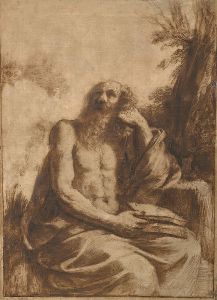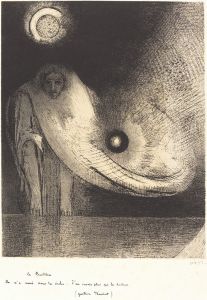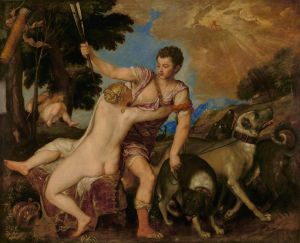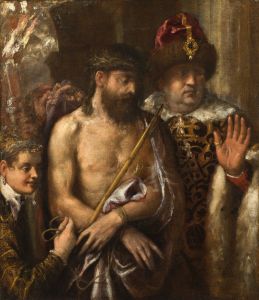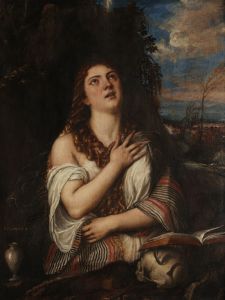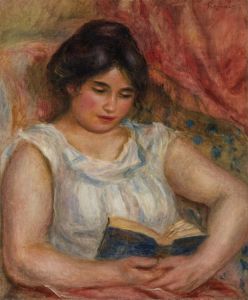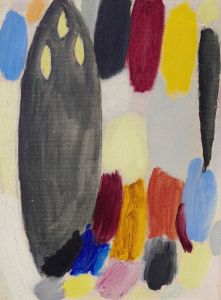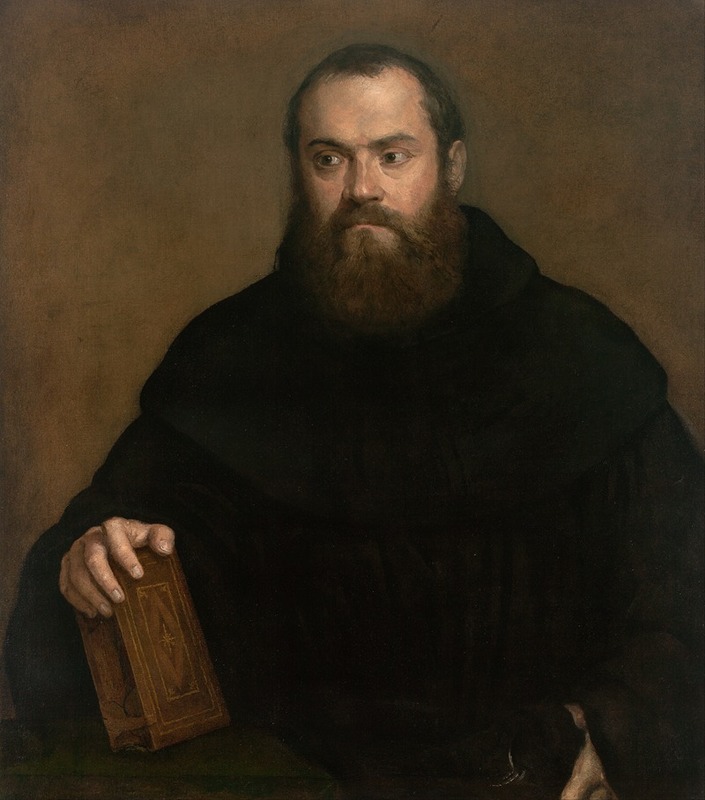
A monk with a book
A hand-painted replica of Titian’s masterpiece A monk with a book, meticulously crafted by professional artists to capture the true essence of the original. Each piece is created with museum-quality canvas and rare mineral pigments, carefully painted by experienced artists with delicate brushstrokes and rich, layered colors to perfectly recreate the texture of the original artwork. Unlike machine-printed reproductions, this hand-painted version brings the painting to life, infused with the artist’s emotions and skill in every stroke. Whether for personal collection or home decoration, it instantly elevates the artistic atmosphere of any space.
"A Monk with a Book" is a painting by the renowned Italian Renaissance artist Titian, who is celebrated for his masterful use of color and innovative compositions. This artwork is believed to have been created around the early 16th century, a period during which Titian was establishing himself as one of the leading painters in Venice.
The painting depicts a solitary monk, who is portrayed with a contemplative expression, holding a book. The identity of the monk is not definitively known, but the figure is often interpreted as a representation of a religious or scholarly figure, which was a common theme in Renaissance art. The monk's attire is typical of monastic clothing, characterized by a simple robe, which emphasizes the themes of piety and devotion.
Titian's skillful use of color and light is evident in this work, as he employs a rich palette to create a sense of depth and realism. The play of light and shadow on the monk's face and hands highlights Titian's ability to convey emotion and character through subtle details. The background of the painting is relatively plain, which serves to draw the viewer's attention to the figure of the monk and the book he holds.
The book in the monk's hands is a significant element of the composition, symbolizing knowledge, learning, and the spiritual pursuits associated with monastic life. During the Renaissance, books were precious objects, often linked to the dissemination of religious and philosophical ideas. The inclusion of the book in the painting underscores the intellectual and spiritual dimensions of the monk's existence.
Titian's work during this period reflects the broader cultural and artistic trends of the Renaissance, which emphasized a renewed interest in classical antiquity, humanism, and the exploration of individual identity. "A Monk with a Book" can be seen as part of this larger context, where artists sought to capture the complexity of human experience and the interplay between the spiritual and the earthly realms.
While the exact provenance of "A Monk with a Book" is not well-documented, Titian's works were highly sought after by patrons across Europe, including members of the nobility and the Catholic Church. His ability to convey the subtleties of human emotion and his innovative use of color made him a favorite among collectors and connoisseurs of art.
Today, Titian's paintings are held in high esteem and can be found in major museums and collections around the world. "A Monk with a Book" is an example of his early work that showcases his developing style and the themes that would continue to define his oeuvre. As with many of Titian's paintings, it invites viewers to reflect on the intersection of the spiritual and the intellectual, a hallmark of the Renaissance period.
Overall, "A Monk with a Book" is a testament to Titian's artistic genius and his ability to capture the essence of his subjects with sensitivity and depth. The painting remains an important piece for understanding the evolution of Renaissance art and the enduring influence of Titian's work.







